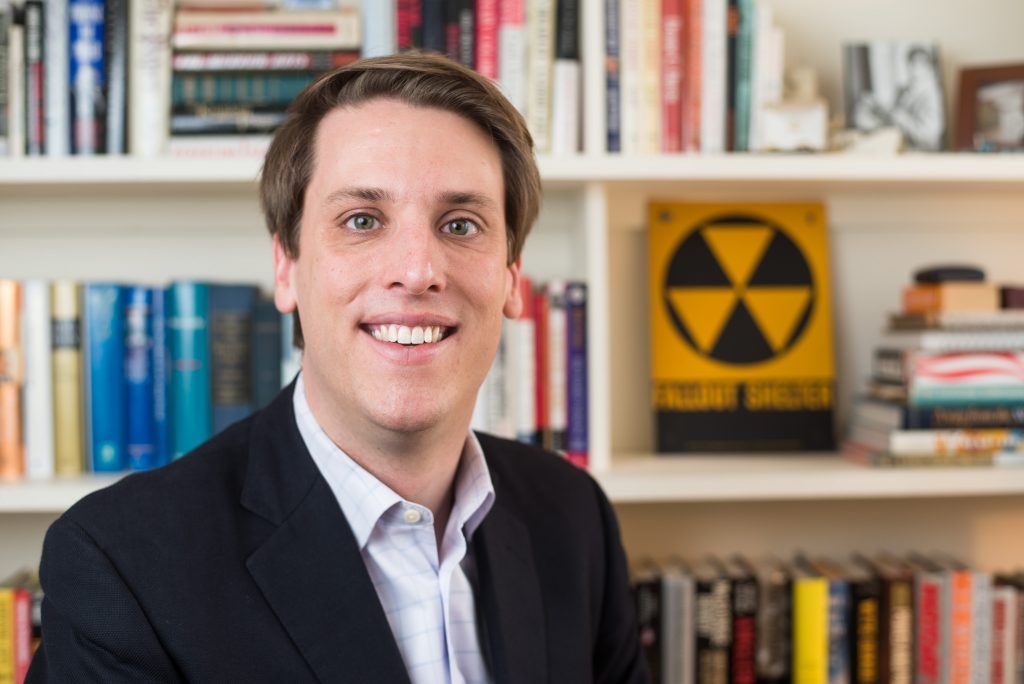Bunkers for the 0.003 percent
By Elisabeth Eaves | July 5, 2017

In the 2003 television series Battlestar Galactica, a secretary of education, who happens to be away from the planet Caprica when the Cylons attack it with nuclear weapons, soon finds herself named president because everyone else in her government is dead.
Substitute Russians for Cylons and the United States for Caprica, and it turns out that US Cold War leaders prepared for a very similar scenario. As far back as the 1940s, officials began planning for “continuity of government” in the event of a nuclear attack. They laid out who would preside in the wake of the catastrophe, and built dozens of underground bunkers where surviving leaders could take refuge. There is one buried deep in Colorado’s Cheyenne Mountain and another on an island in Palm Beach County, Florida. Journalist Garrett M. Graff’s latest book takes its title from one of these shelters, a 650-acre compound in Pennsylvania called Raven Rock.
Raven Rock: The Story of the U.S. Government’s Secret Plan to Save Itself—While the Rest of Us Die explores what the government proposed to do if the country was attacked with nuclear weapons. As well as spiriting high-level officials into mountainside bunkers, it planned to launch an airborne command post from which leaders could conduct a nuclear war, and have staff ready to serve a new president, whoever in the long line of succession that turned out to be. As Graff explains in this interview, these strategies are not just a relic of the 20th century, but in fact gained a new surge of interest after the 9/11 terrorist attacks.
The Bulletin reached Graff by telephone in Colorado, where he was attending the Aspen Ideas Festival as part of his work as executive director of the Aspen Institute’s Cybersecurity and Technology Program.
BAS: It seems that continuity-of-government plans are about saving the government, not the civilian population.
GRAFF: That’s part of the arc of the book. The first iteration of these plans in the 1940s and 1950s really did hope to be able to evacuate the civilian population. The idea was that we would have eight, 10, 12 hours of warning before a nuclear attack. The Russian military didn’t have a huge nuclear arsenal at the time, and the idea was that we would be able to have a survivable nuclear war.
The Interstate Highway System is one of the biggest physical legacies of these programs. As originally conceived by US President Dwight Eisenhower, it was an effort in part to speed the evacuation of urban centers and the movement of war material around the country.
Over subsequent years, the weapons got more powerful, they got more plentiful, and they got faster. We went from bombers to missiles. So all that warning time shrank to just 15 or 30 minutes. At that point, saving the civilian population in any sort of large-scale way became impossible, and the plans shrank in ambition to effectively what they are today, which is the ability to squirrel away a small number of high-level government officials in mountain bunkers around the capital.
BAS: Your subtitle is rather pointed. Is it wrong for the government, having led us into war, to plan for the survival of its own members? It seems like the opposite of the captain going down with the ship.
GRAFF: I think it’s a horrible reality, but I don’t know that the government has a lot of other options. Even in a worst-case scenario, you would have tens of millions of Americans who would survive any initial catastrophe. They’re going to be looking to the government to provide some semblance of safety and security. There is a need to protect a small number of high-level decision makers, to be able to make the decisions in the opening minutes and hours of a catastrophe, and also in the weeks and months afterwards.
BAS: When a president is whisked out of harm’s way, like George W. Bush was on 9/11, he can’t actually communicate with the public, or exert the kind of personal leadership people might want. Is packing government leaders off to bunkers really a good idea?
GRAFF: We saw this tension throughout the Cold War. You cannot both keep someone secure and keep them in communication.
During key moments during the Cold War, when people thought that something was about to happen, you actually had Presidents like Truman, Kennedy, and Carter make the decision that they were going to go down with the ship. They were going to stay in the White House and die in the opening minutes of an attack, because that was the only way they could guarantee they were still in control of the nation’s military up until that last minute.
On 9/11, you saw a very real trade-off. President Bush was successfully put aboard Air Force One in Sarasota, Florida, and hidden away in the skies over the Gulf of Mexico, but it came at the cost of his ability to communicate both with his own government and the American people. He was doing the right thing for his role as commander-in-chief of the US military and duly elected head of state, but it came at some political cost. What we wanted was Rudy Giuliani marching down the streets of New York City right to Ground Zero. Even though that was something that, for security reasons, you could never have the president doing.
BAS: Your book is about plans that originated during the Cold War, but you note that there was a resurgence of interest—and preparation efforts—after 9/11. What specific scenarios do today’s continuity-of-government planners anticipate?
GRAFF: Both 9/11 and an incident before that—the sarin gas attack on the Tokyo subway by a doomsday cult—really focused the US government on the possibility that something completely out of the blue could occur. You might have no warning, and would need to have people already pre-positioned in bunkers, ready to take control if something happened to Washington.
Most terrorist attacks would be, probably, very highly localized. What that means is that in a nation of 330 million people, you could have a terrorist attack that wipes out just a couple of square blocks of Washington and have the entire rest of the nation—329 million people—leaderless, unless you have these continuity-of-government plans in place. The threat from rogue states, the threat from terrorist groups, the threat from a cyber attack, means that today these plans are much less focused on a catastrophic national attack and much more focused on a catastrophic local attack.
BAS: Are there specific things that need to happen to kick these plans into effect?
GRAFF: Just as the Pentagon has the five-level DEFCON system [short for “defense readiness condition”] to denote how ready it is for war, the federal government has COGCON procedures, which denote the condition of continuity-of-government plans. It is a one-to-four ranking, with four representing peace time. The system guides how the government would activate procedures and facilities, and who would be evacuated to where. At COGCON one, most of the senior US government would be hidden away.
BAS: Who decides to change the COGCON level?
GRAFF: The president, the national security staff, and the homeland security advisor. Theoretically, these plans are always ready. The bunkers are fully staffed, 24 hours a day, 365 days a year. The president’s doomsday plane is still kept on alert at Offutt Air Force Base, Nebraska, 24 hours a day, engines on, ready to evacuate the president wherever he may be.
BAS: How many people in total could actually fit into the US government’s doomsday bunkers?
GRAFF: On a day-to-day basis, they’re staffed by just a few hundred people, but in an emergency, you would be able to fit between 6,000 and 10,000 people inside. It would depend on how much warning there was, what facilities are being used, and how long you’re looking to use them.
BAS: Just how long is the presidential line of succession?
GRAFF: You’ve got the 20 or so people in the line of official succession, but then each of those offices has a 20-person line of succession beneath it. It includes people outside of the capital by design, in case something happens to Washington.
You would have this very weird set of surprise leaders declaring themselves to America in the wake of a nuclear attack or a catastrophic event in Washington. It would include the UN ambassador, the US attorney for the Northern District of Illinois, the top federal prosecutor in Chicago. The head of the Energy Department’s Savannah River operations office in South Carolina stands eighteenth in line for succession to be energy secretary. You would have all of these people popping up and saying, “Hi, we’re the new leadership of the United States!”
Together, we make the world safer.
The Bulletin elevates expert voices above the noise. But as an independent nonprofit organization, our operations depend on the support of readers like you. Help us continue to deliver quality journalism that holds leaders accountable. Your support of our work at any level is important. In return, we promise our coverage will be understandable, influential, vigilant, solution-oriented, and fair-minded. Together we can make a difference.
Topics: Analysis, Interviews, Nuclear Weapons














